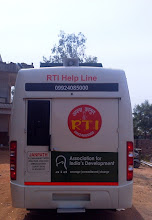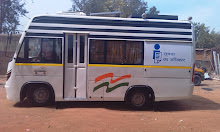Indian
Express: New Delhi: Monday, 08 February 2016.
Twenty-nine
state-owned banks wrote off a total of Rs 1.14 lakh crore of bad debts between
financial years 2013 and 2015, much more than they had done in the preceding
nine years.
In response
to an RTI application filed by The Indian Express, the RBI disclosed that while
bad debts stood at Rs 15,551 crore for the financial year ending March 2012,
they had shot up by over three times to Rs 52,542 crore by the end of March
2015.
Asked about
the details of the biggest defaulters, whether individuals or business
entities, whose bad debts to the tune of Rs 100 crore or more had been written
off, the RBI said: “The required information is not available with us.” Banks
are required to report the bad debts on a consolidated basis, it said.
Even as the
government has been trying to shore up public sector banks through equity
capital and other measures, bad loans written off by them between 2004 and 2015
amount to more than Rs 2.11 lakh crore. More than half such loans (Rs 1,14,182
crore) have been waived off between 2013 and 2015.
Only two
banks, State Bank of Saurashtra and State Bank of Indore, have shown zero bad
debts in the past five years.
In other
words, while bad loans of public-sector banks grew at a rate of 4 per cent
between 2004 and 2012, in financial years 2013 to 2015, they rose at almost 60
per cent. The bad debts written off in financial year ending March 2015 make up
85 per cent of such loans since 2013.
The RTI reply
also disclosed that bad debts have declined only four times since 2004. The
last time was in 2011.
An analysis
of the information available with the RBI till 2012-13 also shows that between
2009 and 2013, both the advances by public sector banks to individuals and
business entities as well as their amount of bad debts written off doubled.
From 0.33 per cent of total advances in 2009, bad debts rose to 0.61 per cent
in 2013.
Bank-wise
break-up shows State Bank of India, India’s largest bank, is way ahead of
others in declaring loans as unrecoverable, with its bad debts shooting up
almost four times since 2013 from Rs 5,594 crore in 2013 to Rs 21,313 crore in
2015.
In fact,
SBI’s bad debts made up 40 per cent of the total amount written off by all
other banks in 2015 and were more than what 20 other banks wrote off. In 2014
too, the bank’s bad debts alone comprised 38 per cent of the total of all
banks. The figure of bad loans for 2014 and ‘15 combined, Rs 34,490 crore, was
Rs 10,000 crore more than that for between 2004 and 2013, Rs 23,992 crore.
The country’s
second-largest public sector bank, Punjab National Bank, has also witnessed a
consistent rise in bad debts since 2013. These grew by 95 per cent between 2013
and 2014 but climbed by 238 per cent between 2014 and 2015 from Rs 1,947 crore
in 2014 to Rs 6,587 crore in 2015.
Reserve Bank
Governor Raghuram Rajan has repeatedly expressed concern over the health of
public-sector banks, and pushed for steps to ensure that banks classify certain
stressed assets as non-performing assets (NPAs) and make adequate provisions to
“strengthen their balance sheets”, besides working out schemes of merger.
With public
sector banks sitting on over Rs 7 lakh crore stressed assets, including NPAs
and restructured loans, Rajan recently said the estimates of NPAs being 17-18
per cent are bit on the high side and that entities should be careful not to
treat NPAs as total write-offs but see if they can change promoters and repay
as the economy recovers. He also said that some banks would have to merge to
optimise their use of resources.
Gross NPAs of
public-sector banks rose to 6.03 per cent as of June 2015, from 5.20 per cent
in March 2015. RBI has asked banks to review certain loan accounts and their
classification over the two quarters ending December 31, 2015, and March 31,
2016.






























